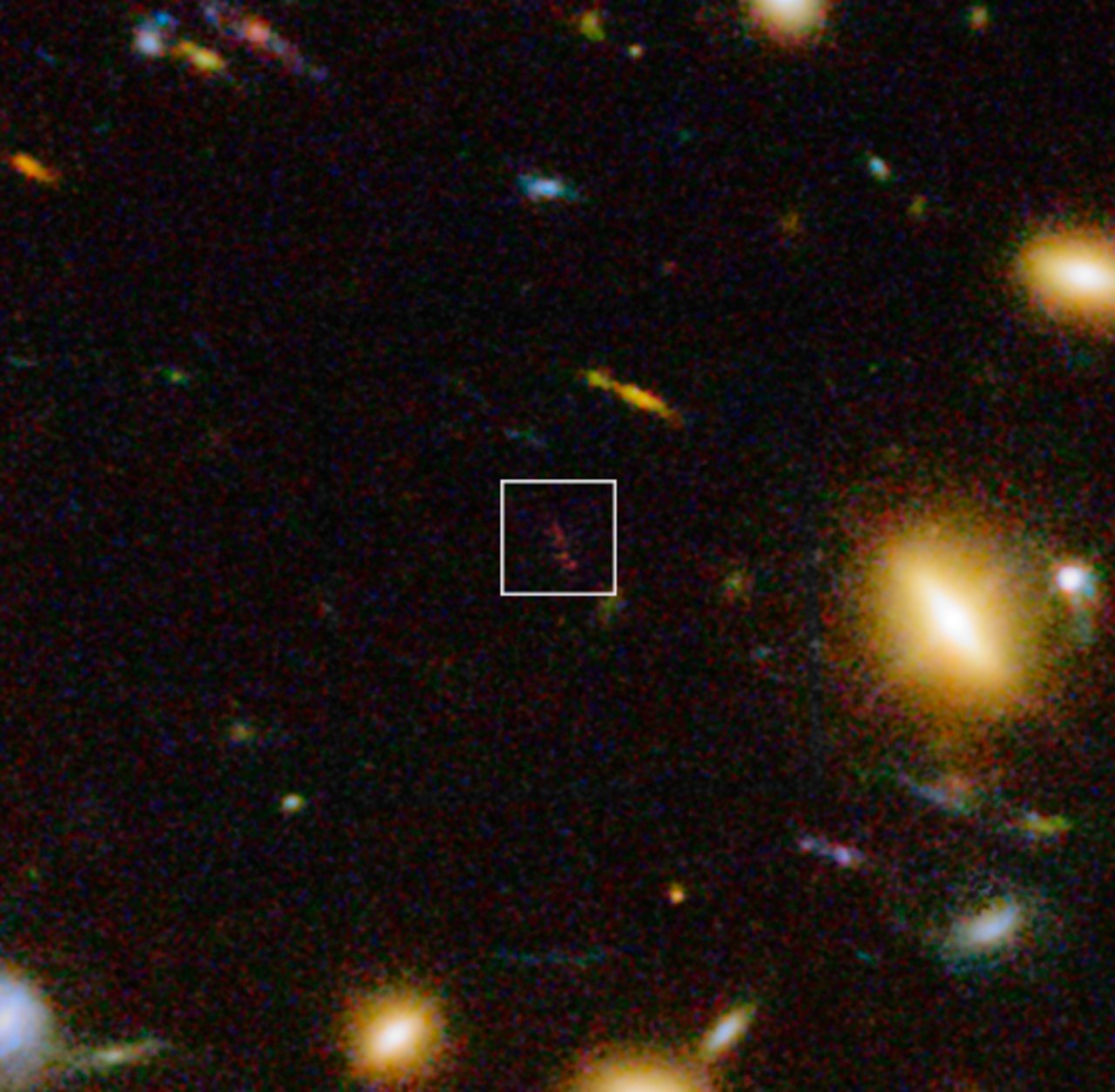ESO: An Old-looking Galaxy in a Young Universe
Posted: Mon Mar 02, 2015 6:08 pm
An Old-looking Galaxy in a Young Universe
ESO Science Release | ALMA | VLT | 2015 Mar 02
Astronomers find dust in the early universe
Niels Bohr Institute | via EurekAlert | 2015 Mar 02
Astronomers Find a Dusty Galaxy That Shouldn't Exist
National Geographic News | 2015 Mar 02
A dusty, normal galaxy in the epoch of reionization - Darach Watson et al
Hubble finds strong contender for galaxy distance record
ESA Hubble Science Release | 2008 Feb 12
Discovery of a Very Bright Strongly-Lensed Galaxy Candidate at z ~ 7.6 - L. D. Bradley et al
ESO Science Release | ALMA | VLT | 2015 Mar 02
ALMA and VLT probe surprisingly dusty and evolved galaxy
One of the most distant galaxies ever observed has provided astronomers with the first detection of dust in such a remote star-forming system and tantalising evidence for the rapid evolution of galaxies after the Big Bang. The new observations have used ALMA to pick up the faint glow from cold dust in the galaxy A1689-zD1 and used ESO’s Very Large Telescope (VLT) to measure its distance.
A team of astronomers, led by Darach Watson from the University of Copenhagen, used the VLT’s X-shooter instrument along with the Atacama Large Millimeter/submillimeter Array (ALMA) to observe one of the youngest and most remote galaxies ever found. They were surprised to discover a far more evolved system than expected. It had a fraction of dust similar to a very mature galaxy, such as the Milky Way. Such dust is vital to life, because it helps form planets, complex molecules and normal stars.
The target of their observations is called A1689-zD1. It is observable only by virtue of its brightness being amplified more than nine times by a gravitational lens in the form of the spectacular galaxy cluster, Abell 1689, which lies between the young galaxy and the Earth. Without the gravitational boost, the glow from this very faint galaxy would have been too weak to detect.
We are seeing A1689-zD1 when the Universe was only about 700 million years old — five percent of its present age (z~7.5). It is a relatively modest system — much less massive and luminous than many other objects that have been studied before at this stage in the early Universe and hence a more typical example of a galaxy at that time.
A1689-zD1 is being observed as it was during the period of reionisation, when the earliest stars brought with them a cosmic dawn, illuminating for the first time an immense and transparent Universe and ending the extended stagnation of the Dark Ages. Expected to look like a newly formed system, the galaxy surprised the observers with its rich chemical complexity and abundance of interstellar dust. ...
Astronomers find dust in the early universe
Niels Bohr Institute | via EurekAlert | 2015 Mar 02
Astronomers Find a Dusty Galaxy That Shouldn't Exist
National Geographic News | 2015 Mar 02
A dusty, normal galaxy in the epoch of reionization - Darach Watson et al
- Nature (online 02 Mar 2015) DOI: 10.1038/nature14164 (pdf)
Hubble finds strong contender for galaxy distance record
ESA Hubble Science Release | 2008 Feb 12
Discovery of a Very Bright Strongly-Lensed Galaxy Candidate at z ~ 7.6 - L. D. Bradley et al
- Astrophysical Journal 678(2) 647 (2008 May 10) DOI: 10.1086/533519
arXiv.org > astro-ph > arXiv:0802.2506 > 18 Feb 2008 (v1), 13 May 2008 (v2)
